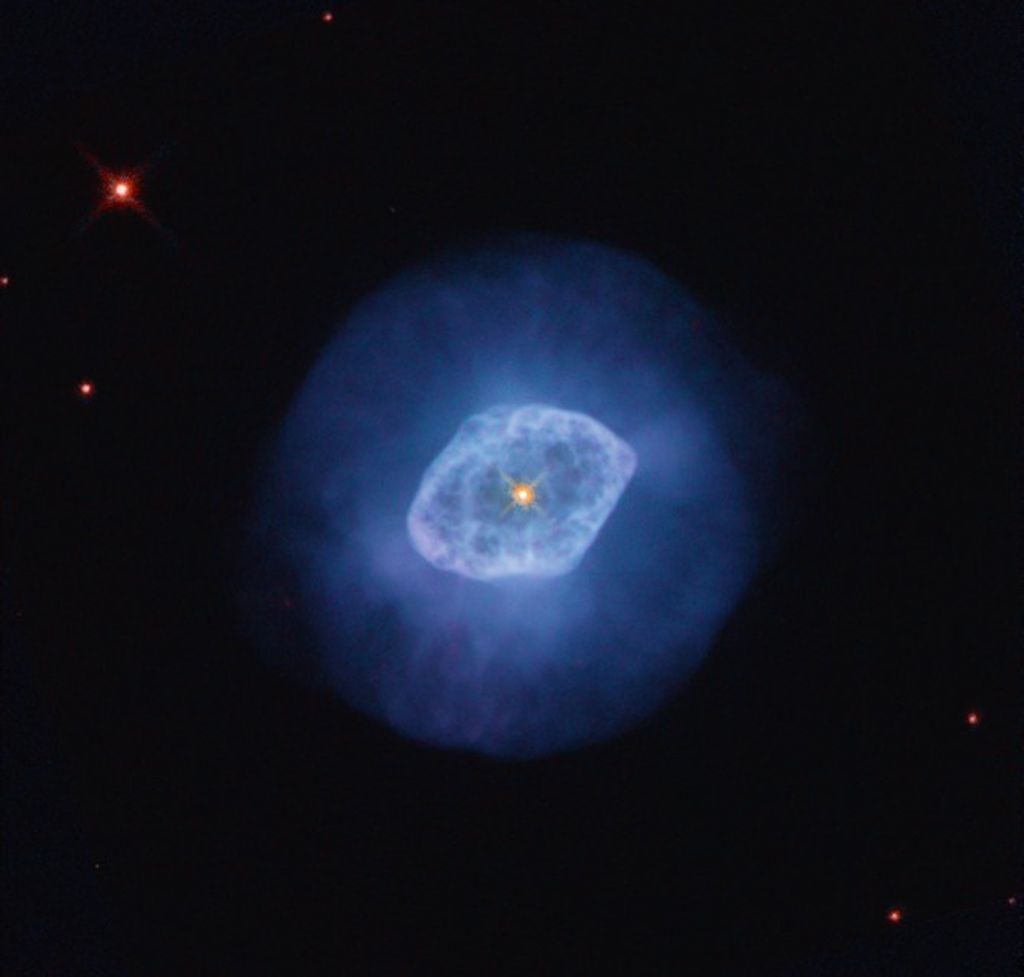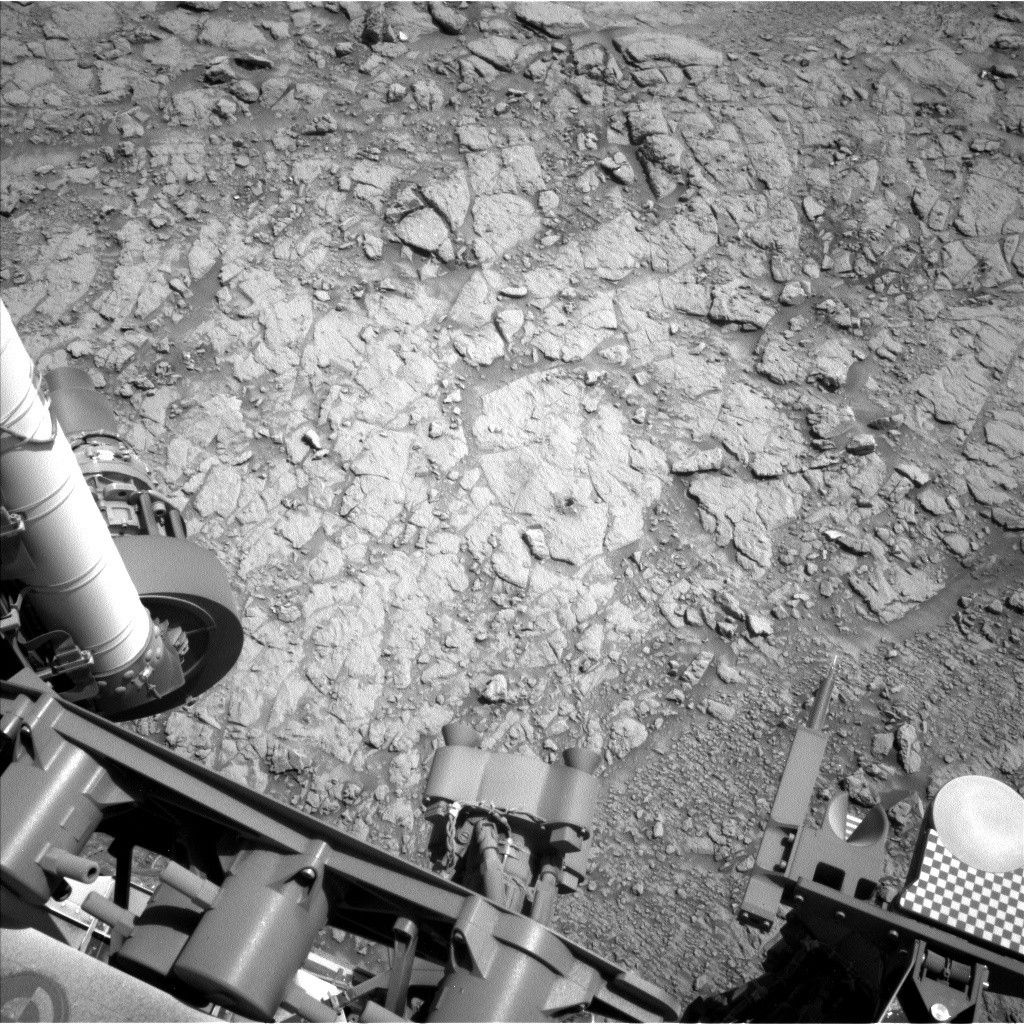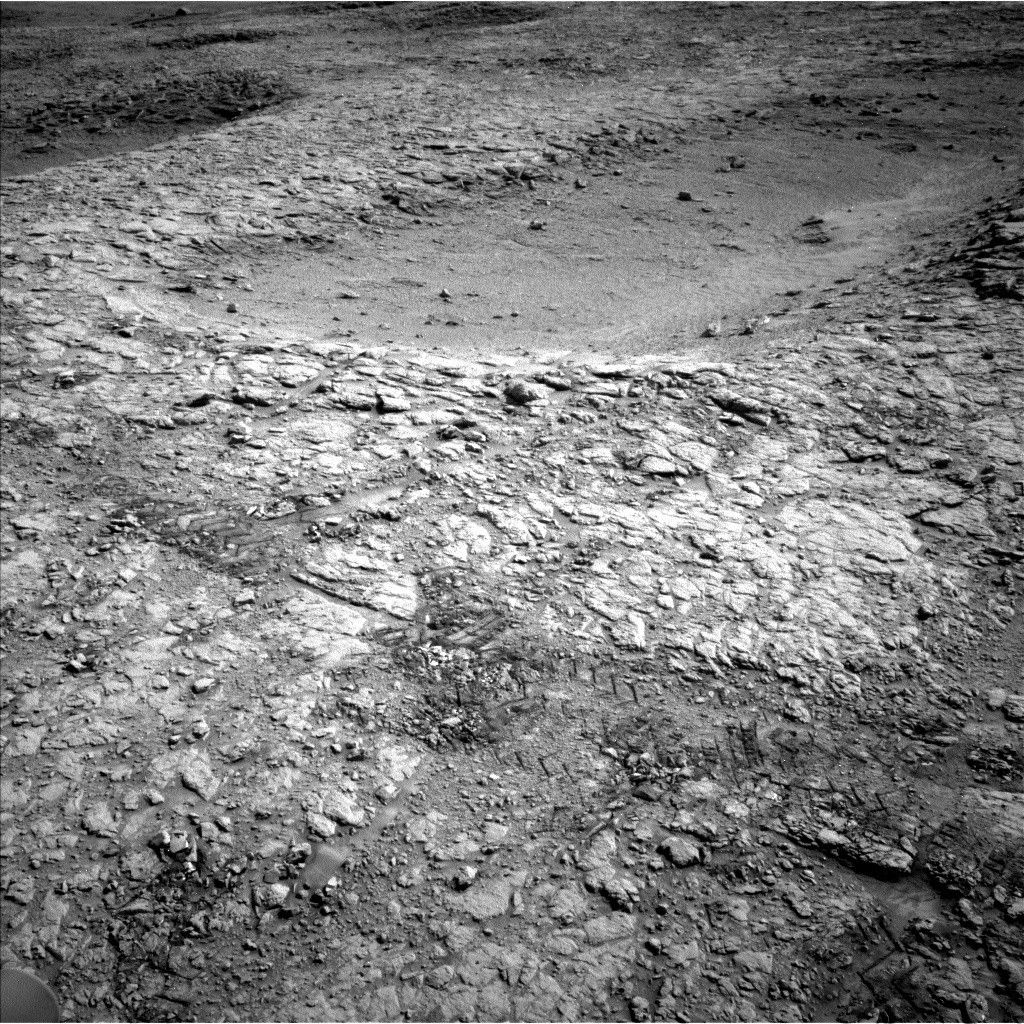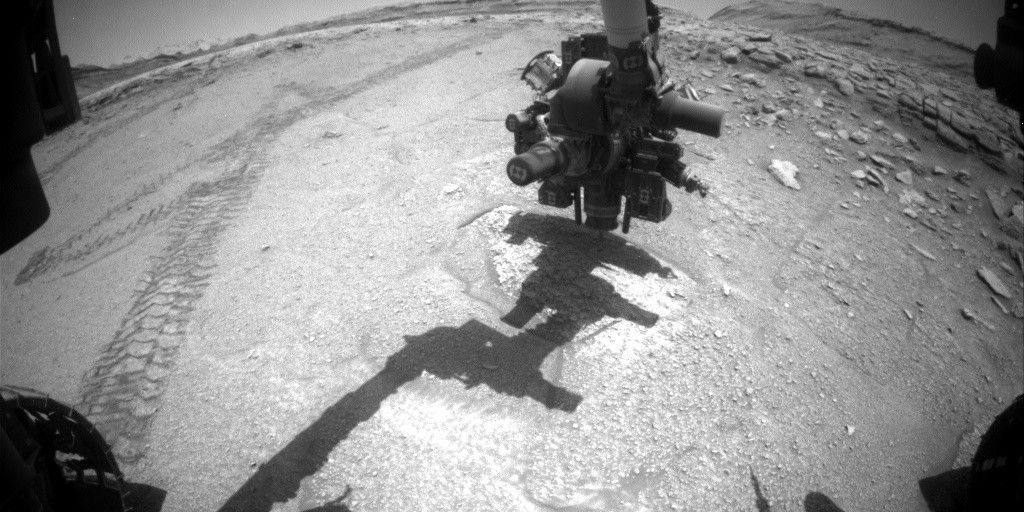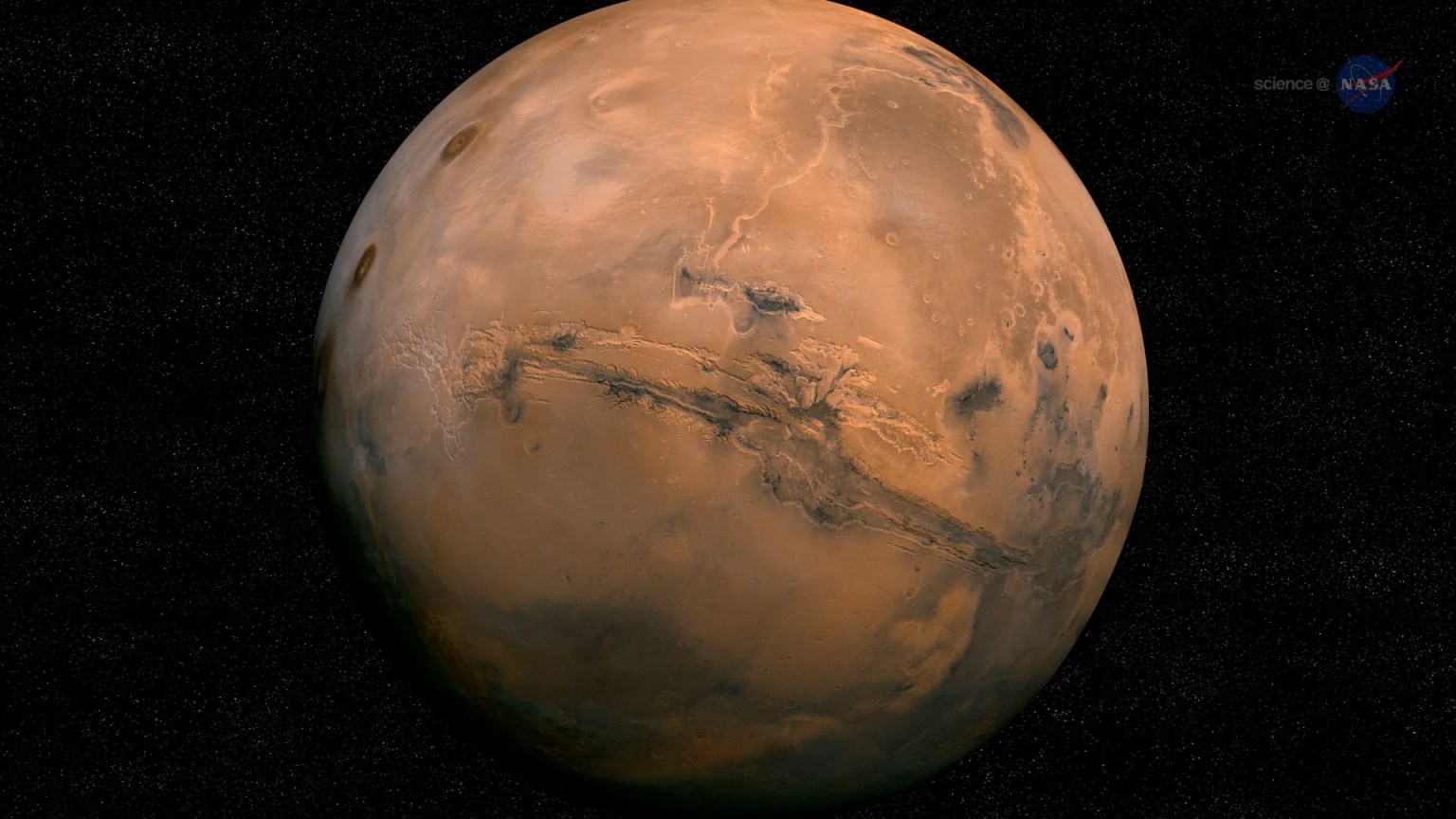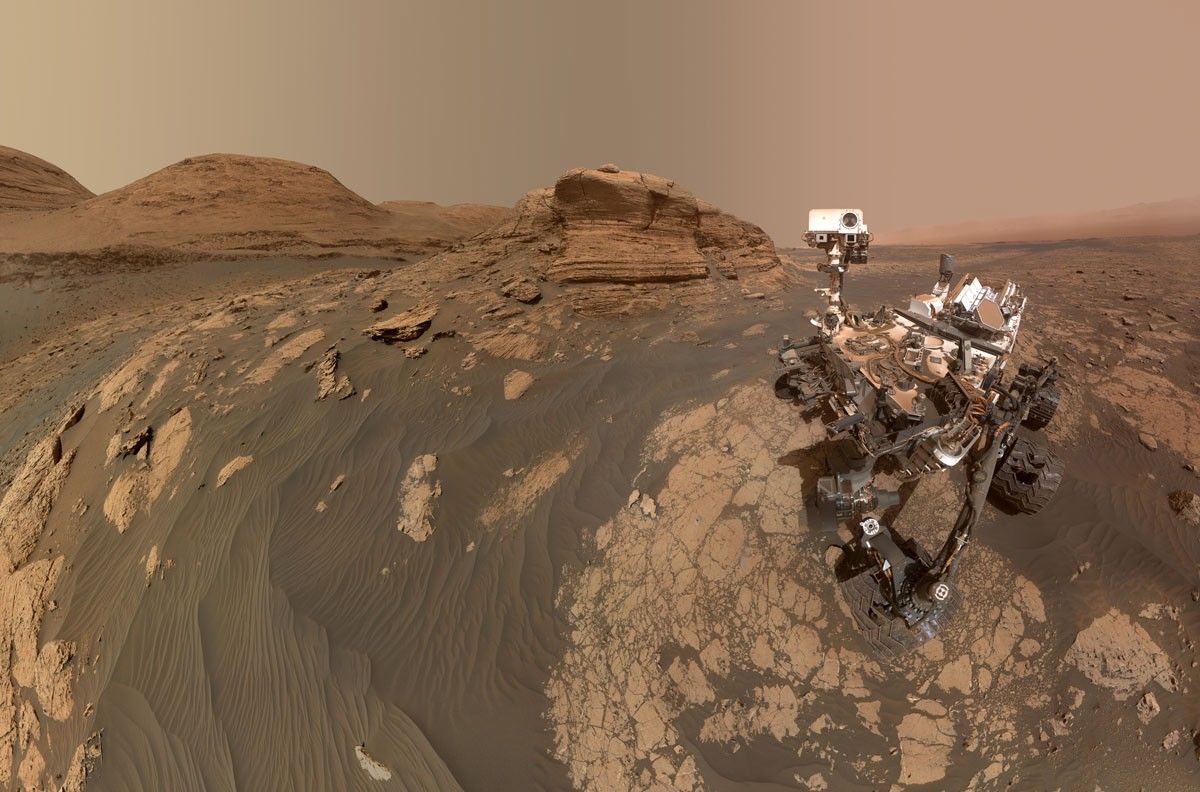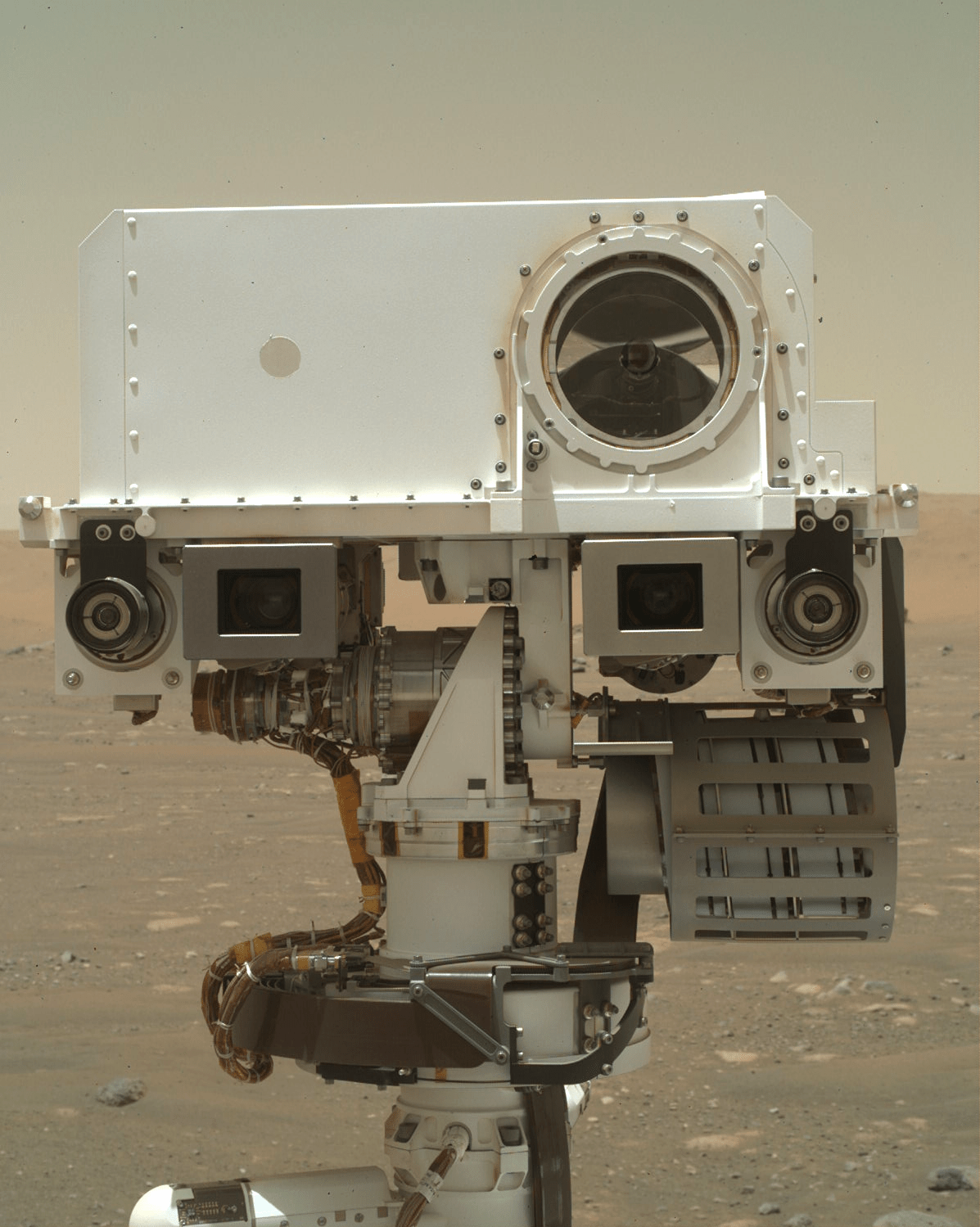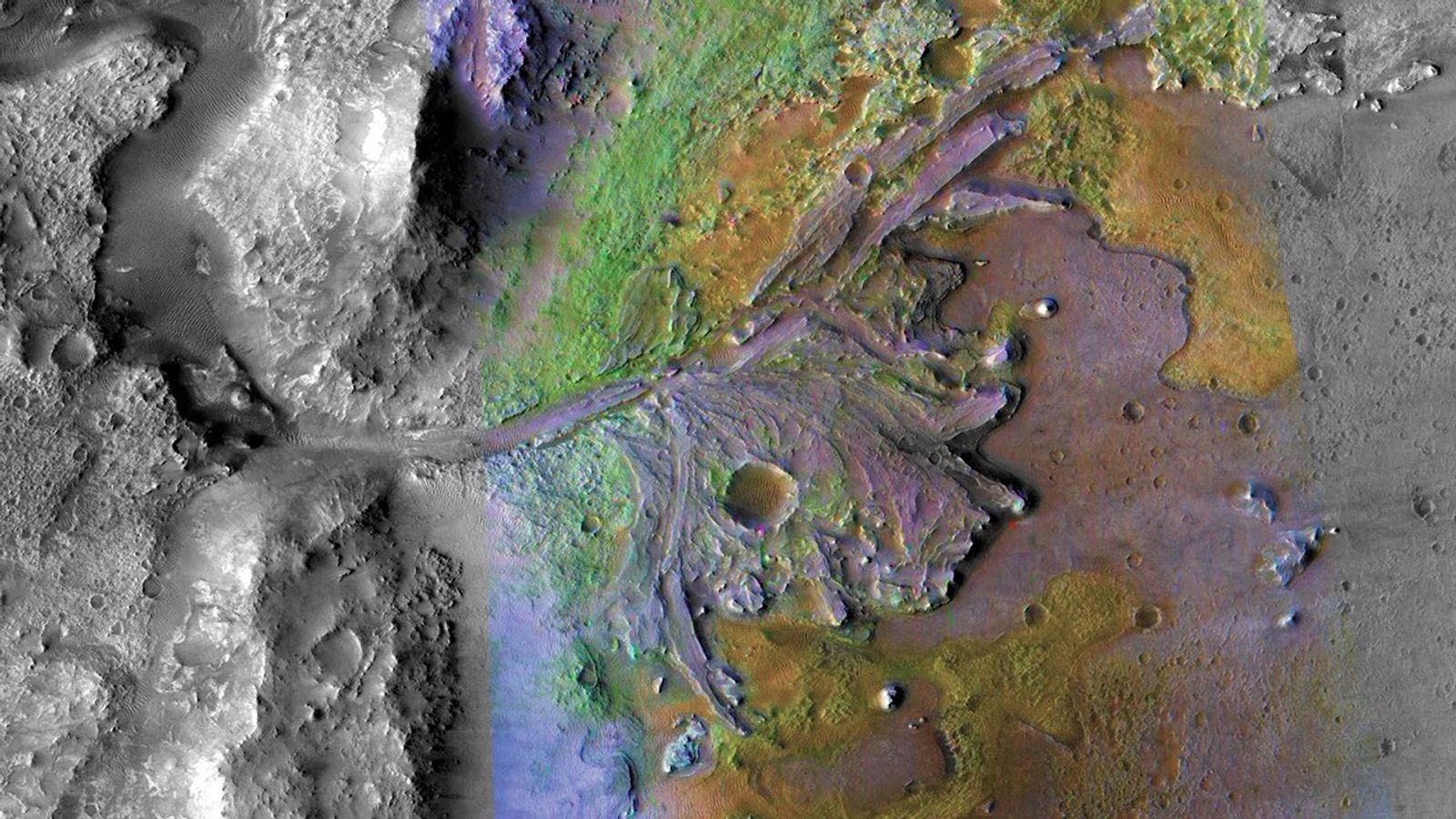Today’s plan for sols 871 and 872 is our last chance to get
some science done before we begin a week of no activity while the engineering
team upgrades the rover software. The plan is to do two ChemCam "rasters" on
targets "Funk Valley" and "Rainbow Basin". Each raster will analyze three
closely-spaced spots on the target. Funk Valley is our latest candidate
mini-drill target (our last mini-drill ended up breaking the rock , so we’re
trying again), and Rainbow Basin is a rock with some interesting
erosion-resistant knobs. Mastcam will take supporting images of these targets
and then we will be spending a pretty big chunk of time doing some data
management for Mastcam, transferring less-compressed versions of some images
from Mastcam’s internal memory over to the rover prior to the flight software
update. The last activity on sol 871 will be an overnight analysis of the chunk
of rock that our first mini-drill dislodged, using APXS. This is a rare chance
to do APXS on a target with a fresh, non-dusty surface!
On sol 872, ChemCam will do some passive observations of the
sky to measure how much oxygen, carbon dioxide, and dust is in the atmosphere
and Navcam will do some routine atmospheric measurements. There are also a
bunch of Mastcam images of the same locations at different times of the day.
These are part of a photometry experiment, which is trying to understand how
the sun scatters off of the martian surface at different angles. There are also
a handful of Mastcam images as part of a change monitoring campaign. The long
break for the software update will allow us to look at the same locations in a
couple weeks and see if any sand has been moved by the wind.
If all goes according to plan, there won’t be a lot of rover
activity over the next week, but the team will be busy poring over the latest
MAHLI images of our drilling area and the chunks that were dislodged during our
first mini-drill! by Ryan Anderson --Ryan is a planetary scientist at the USGS Astrogeology Science Center and a member of the ChemCam team on MSL. Dates of planned rover activities described in these reports are subject to change due to a variety of factors related to the Martian environment, communication relays and rover status.
Written by Ryan Anderson, Planetary Geologist at USGS Astrogeology Science Center
















